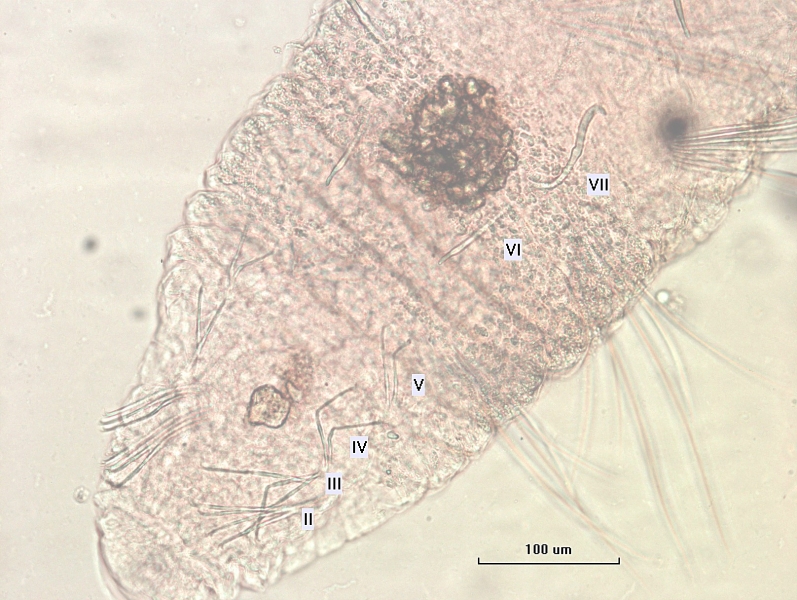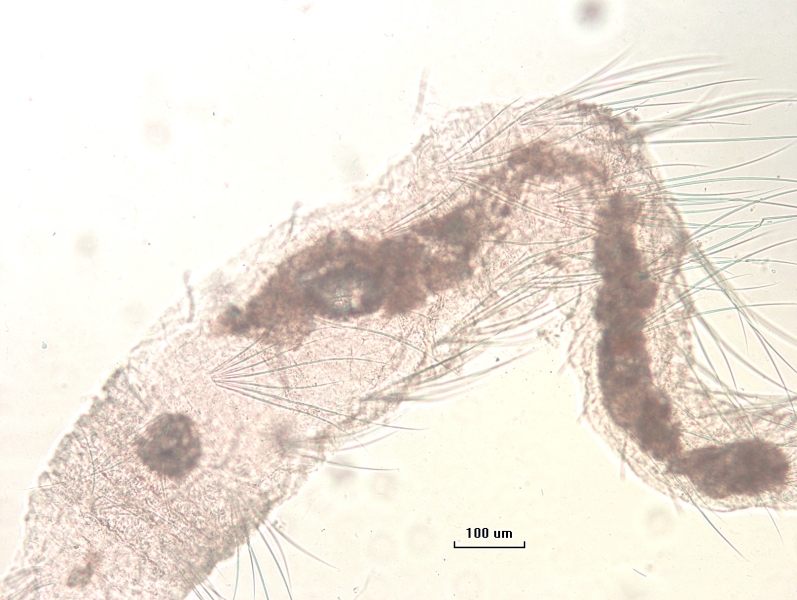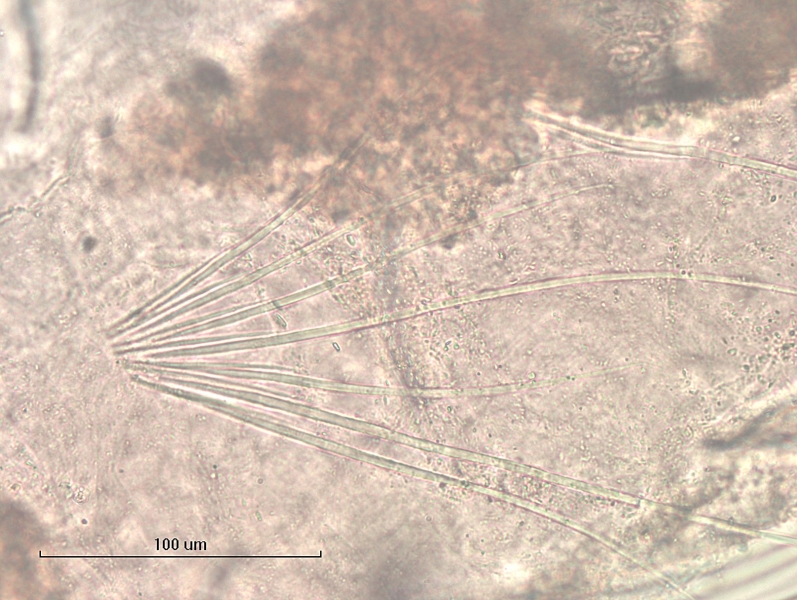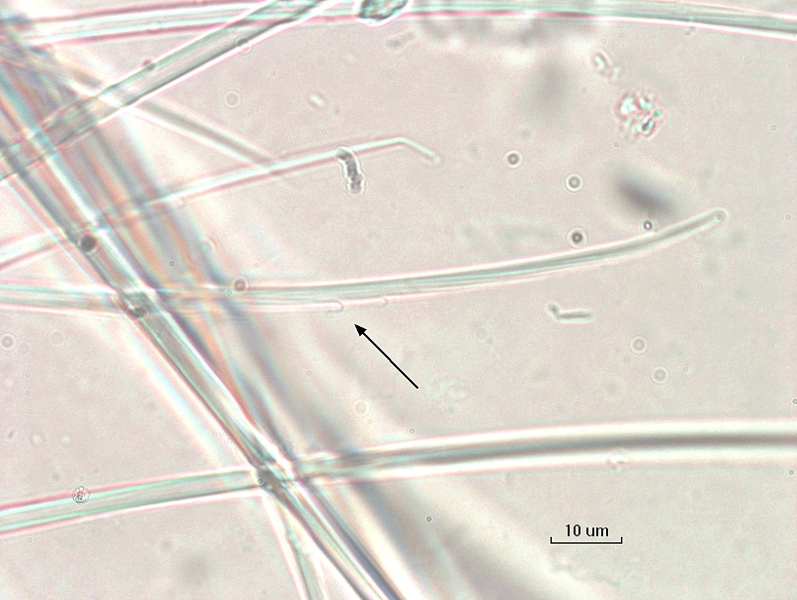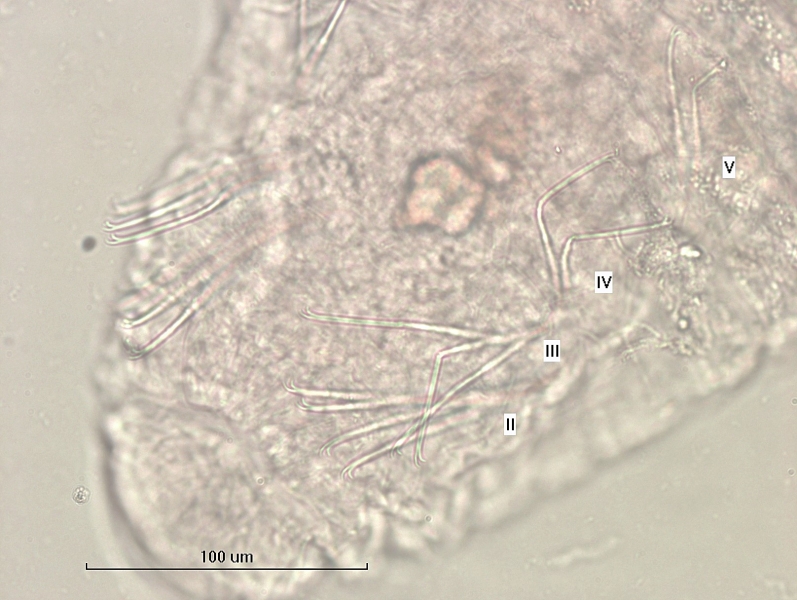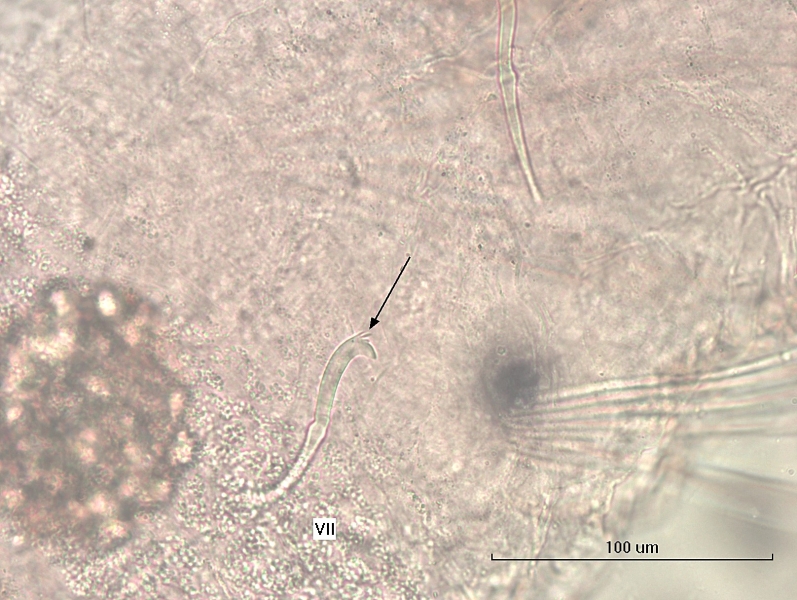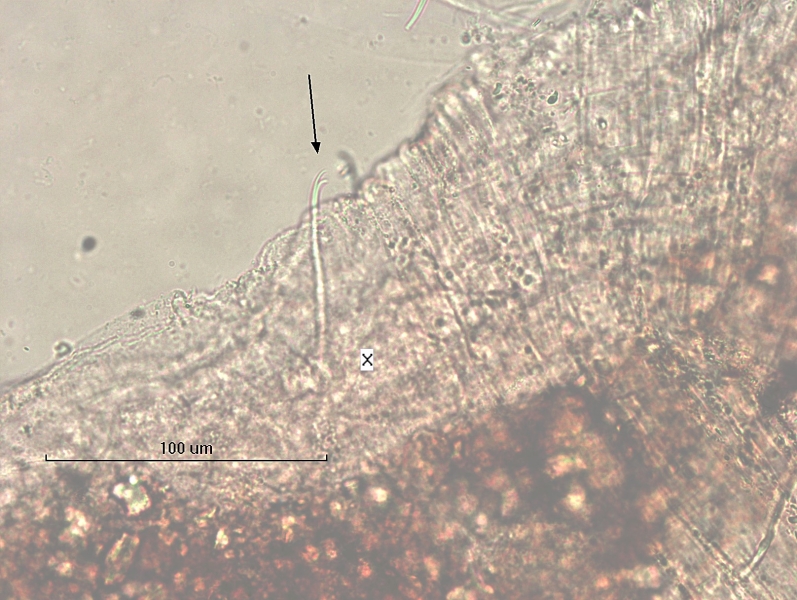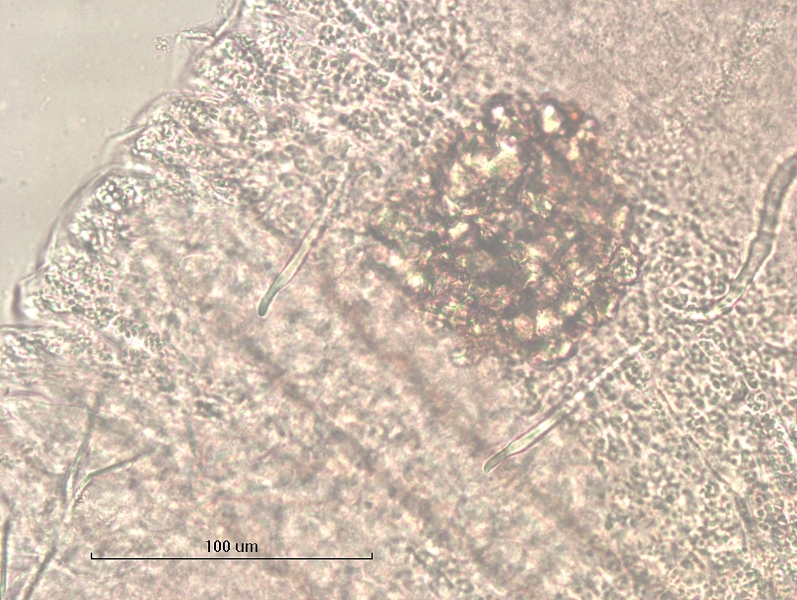Vejdovskyella intermedia
Taxa description
Vejdovskyella intermedia is a freshwater oligochaete worm that is uncommon in the Great Lakes. It is a naidid worm with dorsal bundles beginning in VI and ventral bundles beginning in II, hair chaetae in the dorsal bundles, and without a proboscis. Dorsal bundles have 4–9 hispid hairs and 4–9 simple-pointed needles with slightly broadened tips. The serrations on the hairs are visible at 400x magnification. The ventral chaetae of II are longer than the rest, decreasing in size to V. Starting in VI, ventral bundles contain a single bifid chaeta that is sometimes replaced with a solitary giant chaeta with a replicated thin upper tooth over a strongly bent lower tooth. V. intermedia is eyeless, and the body wall has gland cells and attached foreign matter.
Distinguishing features
V. intermedia is identified by the dorsal bundles starting in VI, many simple-pointed hispid hairs and simple-pointed needles, ventral chaetae of II are longer decreasing in size to V, 1 bifid chaetae per bundle posteriorly occasionally replaced by a giant chaetae with a replicated thin upper tooth, no eyes, and some attached foreign matter.
Habitat
Lake occurrence
This species occurs in all five Great Lakes.
Similar species
V. intermedia is most similar to Vejdovskyella comata. They can be differentiated because V. comata often has eyes, has bifid hair chaetae instead of simple-pointed, with serrations that are larger and require lower magnification to be seen, is missing ventral chaetae in V and sometimes IV, has 2–3 chaetae in ventral bundles VI and beyond, and occasionally has giant chaetae with one thin upper tooth posteriorly. V. intermedia is more common in our samples than V. comata. The only other naidids that V. intermedia may be confused with are Ripestes parasita, Stylaria lacustris (or Stylaria fossularis), and Arcteonais lomondi, which all have dorsal bundles with hairs starting in VI, but they also all have proboscises. While it’s possible that the proboscis could be obscured, R. parasita has elongated hairs in VI–VIII and isn’t usually found in our samples, S. lacustris usually has invaginated lobes next to the proboscis and ventral chaetae with a double-bend at the proximal end (S. fossularis has a conical proboscis without lobes and may have a single-bend in the ventral chaetae), and A. lomondi has hair chaetae crossing in a tent shape at the proximal end. None of them have giant ventral chaetae.
Relative size
V. intermedia is a small freshwater oligochaete.
Does it have a barcode reference from the Great Lakes?
No, this species does not yet have a barcode reference from the Great Lakes.
References
Kathman, R.D., and R.O. Brinkhurst. 1998. Guide to Freshwater Oligochaetes of North America. pp. 78–79, 38, 34, 62–63.
Hiltunen, J.K., and D.J. Klemm. 1980. A Guide to the Naididae (Annelida: Clitellata: Oligochaeta) of North America. pp. 25, 39.


